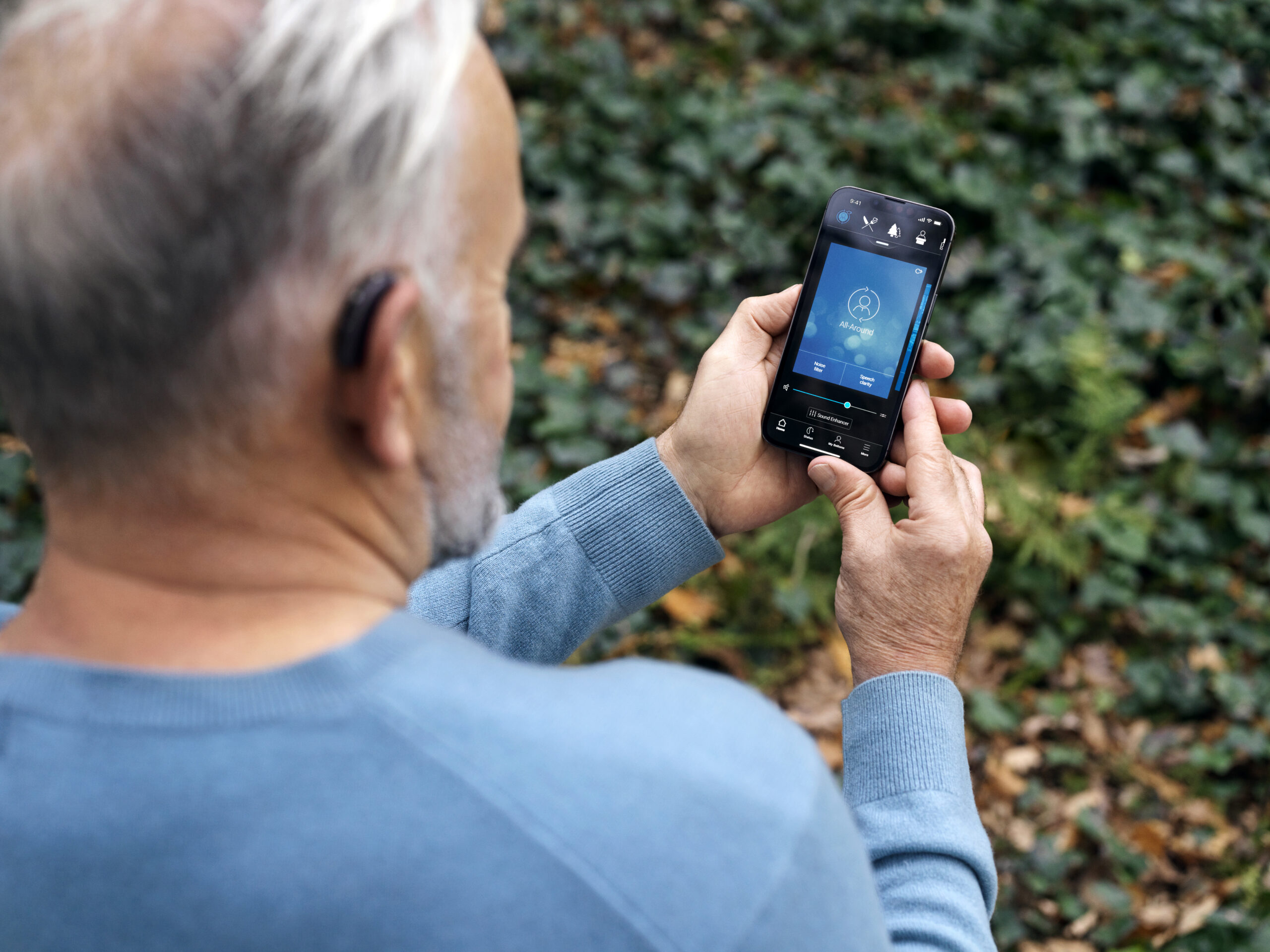What to Expect From Bluetooth Hearing Aids

Hearing aid technology has forged ahead in leaps and bounds over the past decade, with Bluetooth technology helping those with hearing loss keep up with the world. Traditional hearing aids previously had no simple way to allow sound to travel from your device directly to your hearing aid.
But Bluetooth hearing aids connect to tv sets, and Bluetooth enabled hearing aids can help you stay connected to Android and iOS phones, tablets and other audio devices.
Bluetooth, Today’s Leading Edge Hearing Technology
For people with hearing loss, the hearing aid wearing experience has changed dramatically from years past. Those wearing a hearing aid these days, whether just one hearing aid or two, are likely to have a Bluetooth-enabled aid. Such aids now double as personal audio devices.
Bluetooth hearing aid wearers use smart technology to help them hear better and have the convenience of connecting straight into their devices wirelessly.
How Do Bluetooth Hearing Aids Work?
Modern hearing aids can now pair by Bluetooth to compatible external devices such as your smartphone, television or other audio media. Once set up the connection happens automatically for phone calls or watching the TV. You now have your own personal sound customized specifically for your hearing loss.
What Advantages exist with the New Bluetooth 5.0?
The new Bluetooth 5.0 now allows two way transmission. This means that the microphones on your hearing aids pick up your voice when on a phone call and send this to the listener at the other end.
You can answer a phone call by pressing a button on board the hearing aid and speak naturally without holding anything up to your ear. You can also hang up by pressing a button on the hearing aid.
The real benefit to you is the ability to be more productive instead of having to hold the smartphone for the duration of the phone call, you can move around and perform other activities simultaneously.
Best Hearing Aids With Bluetooth Technology
The older hearing aids simply helped wearers hear better, with no way of directly connecting to the latest devices. Wearers had difficult access to music players, mobile phones and such, so they had to take their aids off and insert earbuds if they were jogging.
But now, with the new wireless hearing aids like those manufactured by Beltone, Bernafon and Unitron wearers can connect their phones and other custom audio devices and stream sound directly into their aids via Bluetooth.
Talk to an Ace Audiology professional today to find out more about compatible assistive listening devices and how to use your hearing aids to connect with your network of family, friends and co-workers.
We can provide you with all the information you need about Made for iPhone™, hearing aids, and wireless hearing aids and help you choose the right Bluetooth hearing aids for Bluetooth streaming.
Bluetooth Hearing Aids For Adults
Bluetooth is a wireless communication platform that provides a way to transfer data between two or more electronic devices. The technology was developed via a collaboration of leading tech companies and uses radio waves that are set to a high frequency for transmitting interference-free data without security risks.
A broad range of products incorporating Bluetooth connectivity developed, including computers and tablets, mobile phones, Android devices, televisions, music players, and now, bluetooth hearing aids for seniors and those with hearing loss. There’s no interference in the Bluetooth connection, sound quality is excellent and it is secure.
Bluetooth Hearing Aids Made for iPhone
Certain hearing aids are able to directly communicate with the iOS platform that runs iPad, iPhone, and iPod Touch devices since Apple has patented hearing aids with Bluetooth.
One of the benefits of Bluetooth technology is that it allows the Bluetooth devices to connect without a heavy load on battery power. Most hearing aid manufacturers make aids that use Bluetooth technology, marketed as Made for iPhone™. Visit Apple’s website for an extensive and current listing of hearing aids that can use the iOS platform.
Android Phones
Several hearing aid brands can now stream to Android phones using version 10.0 or higher since Google began developing a hearing aid compatibility standard. When Android 10 launched in 2019 it featured Google support for direct Bluetooth LE audio streaming for hearing aids (ASHA).
The arrangement is focused on saving energy without trading audio quality. This technology has also paved the way for Bluetooth LE Audio, a new universal standard making inroads into the best phones and earbuds.
Bluetooth for Older Generation Hearing Aids
Don’t worry if your hearing aid fails to include a feature for direct streaming from your mobile phone to your hearing aids. Wireless hearing aid manufacturers came up with a clever solution for this long ago. Wireless hearing aids can use streamers or compatible listening devices to allow communication links between any Bluetooth-enabled device and the wireless technology in the hearing aids.
In general, most hearing aids manufactured in the last 3 years are Bluetooth compatible without the need for an external linking device. Firmware upgrades in compatible hearing aids and smartphones can also enhance the hearing aid performance to be hands free.
Remember, Bluetooth is not unique to any specific hearing aid or manufacturer, but it is an electronics industry-standard protocol. Therefore, it’s uniform in working on all personal electronic devices. The platform has been refined and tested rigorously over the years since it’s been used in the mobile phone industry for ages.
For more information on high-quality hearing aids, digital hearing aids, hearing aid prices, Bluetooth enabled devices, hearing tests and the best service Melbourne-wide, call us at Ace Audiology in either Bulleen on 03 9850 8888, or Ivanhoe on 03 9440 9409. We have a qualified hearing specialist who can answer all your questions. We’re here to help you hear your world.
